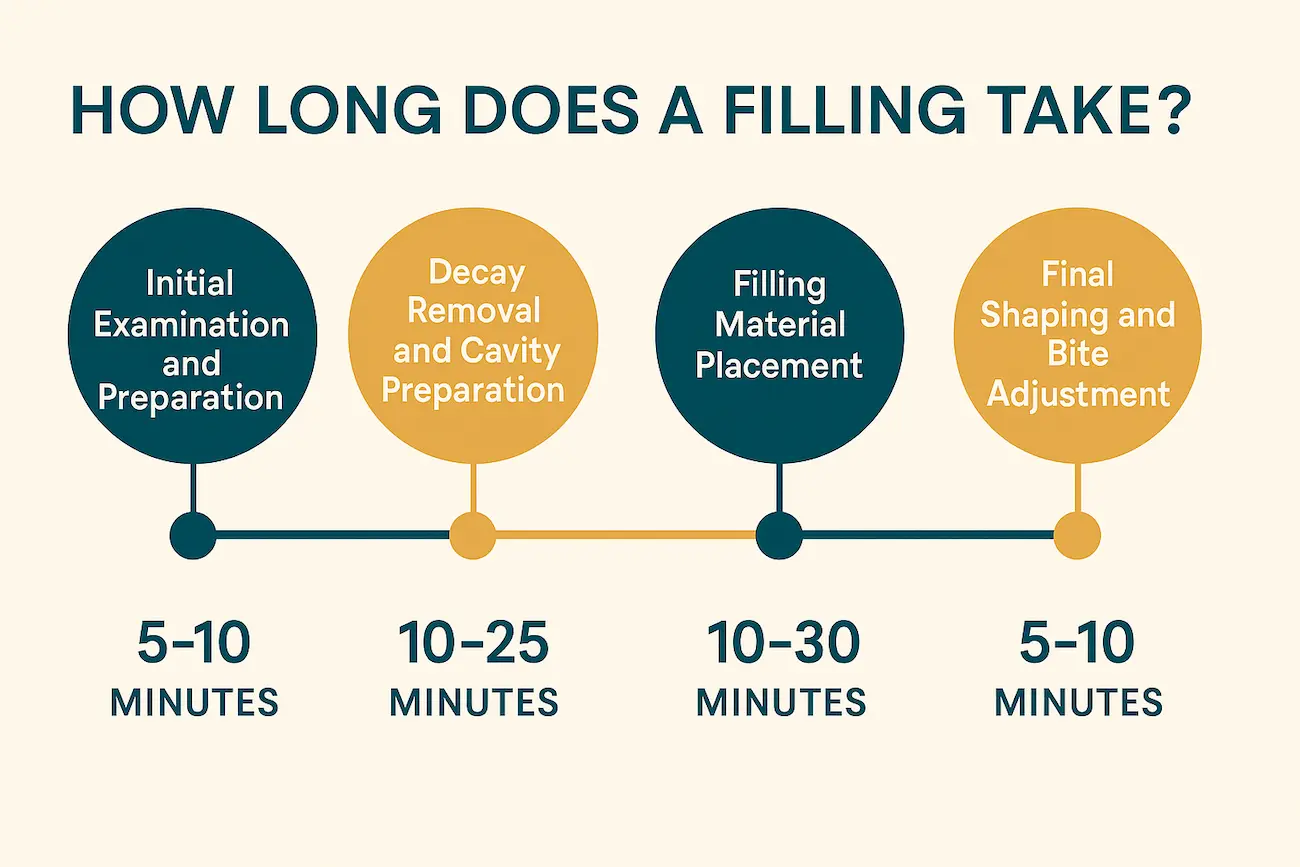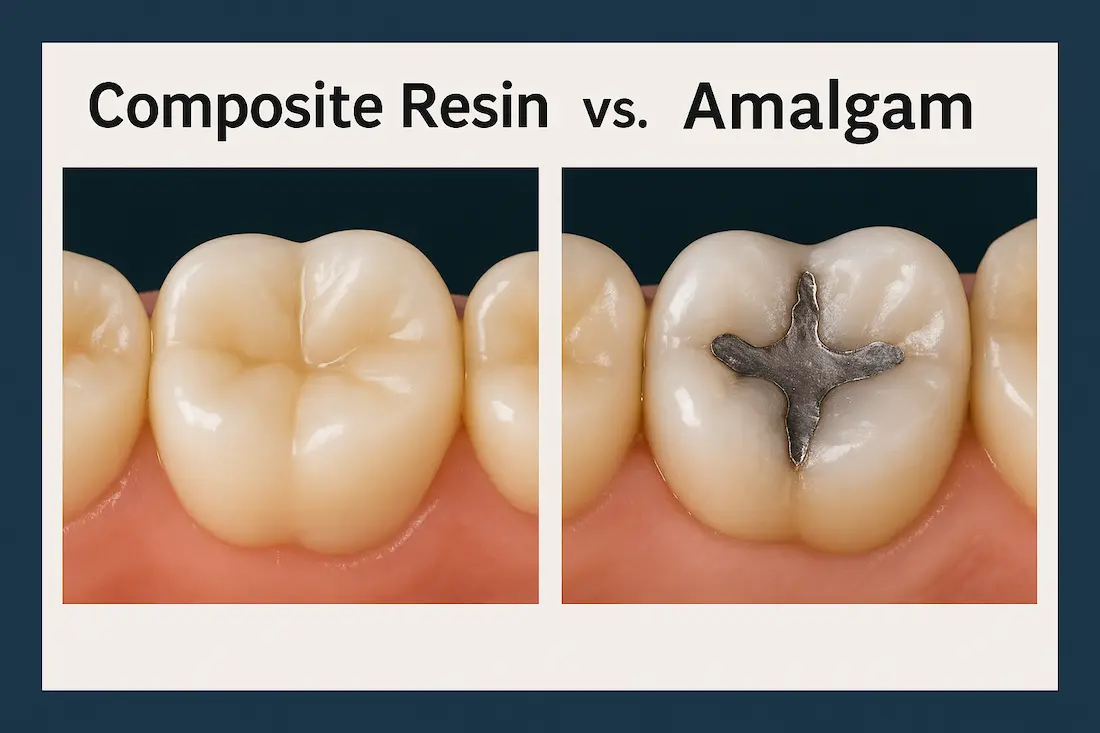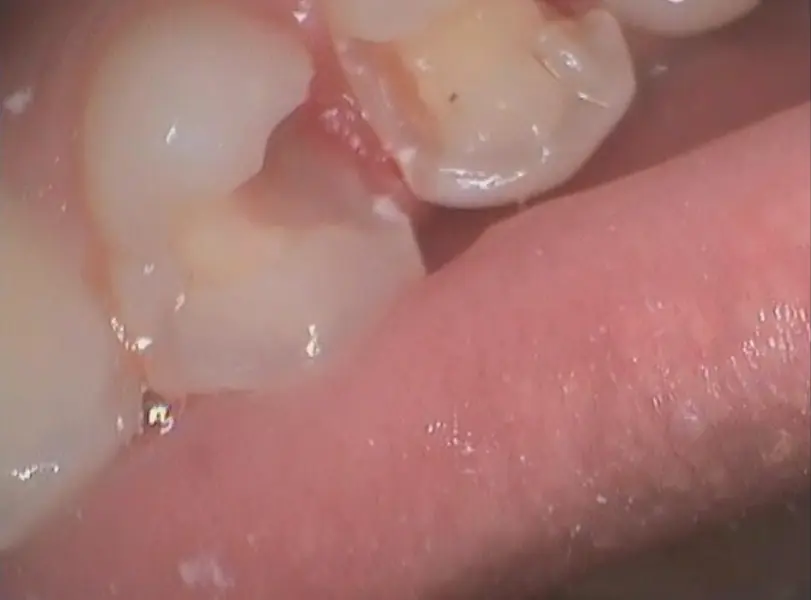Planning for a dental filling appointment often raises questions about time commitment and what to expect during your visit. How long does a filling take? This is one of the most common questions patients ask when they realize that they need dental fillings. Understanding how long fillings take helps you plan your day, arrange childcare if needed, and set appropriate expectations for your dental experience.
Most dental fillings are completed efficiently in a single appointment, typically taking between 20-60 minutes depending on various factors including cavity size, location, and the type of filling material used. The good news is that modern dental techniques and materials have made filling procedures faster and more comfortable than ever before.
Dental Filling Basics
Dental fillings restore teeth damaged by decay, removing the infected portion and sealing the cavity to prevent further damage. The procedure involves several steps that contribute to the overall time requirement. Your dentist first removes all decayed material, cleans the cavity thoroughly, and then fills the space with appropriate restorative material.
Types of Dental Filling Materials
Different filling materials require varying placement techniques and time commitments. Amalgam fillings (silver fillings) typically take less time to place because they're mixed and inserted in a single step. Composite resin fillings (tooth-colored) require more time due to their layered application process and need for light curing between layers.
Glass ionomer fillings fall somewhere in between, offering moderate placement time while providing fluoride release benefits. Gold and porcelain fillings require multiple appointments but aren't commonly used for simple cavity repair due to their complexity and cost.
Cavity Size and Complexity Factors
The size and depth of your cavity significantly impact procedure duration. Small surface cavities on front teeth often take just 15-20 minutes to complete. Moderate cavities involving one or two tooth surfaces typically require 25-35 minutes. Large cavities affecting multiple surfaces or approaching the tooth's nerve can take 45-60 minutes or more.
Procedure Timeline
Initial Examination and Preparation (5-10 minutes)
Your appointment begins with a thorough examination of the affected tooth and surrounding area. Your dentist will review X-rays if needed and explain the procedure. This initial phase helps identify any complications that might affect the timeline and ensures you're comfortable with the treatment plan.
The preparation phase includes positioning you comfortably in the dental chair and setting up necessary equipment. Your dentist will also verify your medical history and any medications that might affect the procedure or anesthesia choice.
Anesthesia Administration (10-15 minutes)
Local anesthesia is typically administered to ensure your comfort during the procedure. The numbing process begins with topical anesthetic applied to the injection site, followed by the local anesthetic injection. Most patients experience complete numbness within 5-10 minutes, though some areas may require additional time and even more injections if the area still doesn't feel numb.
According to the American Dental Association, proper anesthesia is crucial for patient comfort and allows dentists to work efficiently without causing discomfort. The time invested in proper numbing significantly improves the overall experience.

Decay Removal and Cavity Preparation (10-25 minutes)
The decay removal phase involves using specialized dental instruments to eliminate all infected tooth material. Small cavities may take only 5-10 minutes to clean out, while extensive decay can require 20-25 minutes of careful removal. Your dentist must remove all compromised material while preserving as much healthy tooth structure as possible.
Modern dental technology includes laser decay detection and air abrasion techniques that can make this process more efficient and comfortable. These advanced methods allow for more precise decay removal, potentially reducing overall procedure time.
Cavity Cleaning (3-5 minutes)
After decay removal, the cavity must be thoroughly cleaned and prepared for the filling material. This involves disinfecting the area and applying conditioning agents that help the filling bond properly to your tooth. Acid etching for composite fillings requires additional steps but ensures strong adhesion.
The cleaning process also includes checking for any remaining decay or contamination that could compromise the filling's success. This attention to detail adds a few minutes but prevents future problems that would require retreatment.
Filling Material (10-30 minutes)
The time required for filling placement varies significantly based on the material used and cavity complexity:
Amalgam fillings are mixed and placed in one step, typically taking 5-10 minutes for placement and initial shaping. The material sets relatively quickly, allowing for immediate bite adjustment.
Composite fillings require a more complex process involving multiple layers. Each layer must be shaped and cured with a special light for 20-40 seconds. A typical composite filling involves 3-5 layers, making the placement process take 15-25 minutes for optimal results.
Glass ionomer fillings fall between amalgam and composite in terms of placement time, typically requiring 8-15 minutes for proper placement and initial setting.
Final Shaping and Bite Adjustment (5-10 minutes)
The final phase involves carefully shaping the filling to match your natural tooth contours and adjusting your bite. Your dentist will use specialized instruments to ensure the filling doesn't interfere with your normal chewing pattern. Bite adjustment is crucial for preventing discomfort and ensuring the longevity of your restoration. Sometimes patient wants to come back later for bite adjustement. This is normal.
Polishing the filling surface provides a smooth finish that resists staining and plaque accumulation. This final step typically takes 2-5 minutes but significantly improves the filling's appearance and function.
Factors That Affect Filling Duration
Cavity Location in Your Mouth
Front teeth are generally easier to access and work on, making fillings faster to complete. The visibility and accessibility of front teeth allow dentists to work more efficiently, often completing procedures in 15-25 minutes.
Back teeth (molars and premolars) present more challenges due to limited visibility and access. These teeth also have more complex anatomy with multiple surfaces and cusps, often requiring 25-45 minutes for proper restoration.
Between tooth cavities require special techniques and materials, often extending procedure time by 10-15 minutes due to the need for careful isolation and shaping.
Patient Specific Factors
Dental anxiety can significantly impact procedure duration. Anxious patients may need additional time for reassurance, breaks during treatment, or additional anesthesia. Our team specializes in helping anxious patients feel comfortable, sometimes using oral sedation to feel more at easy or for more complex procedures.
Gag reflex sensitivity in some patients requires modified positioning and techniques that can extend treatment time. Experienced dentists can often work around these challenges efficiently while maintaining patient comfort.
Medical conditions such as difficulty opening the mouth wide or certain medications can affect procedure duration. Your dentist will modify techniques as needed to accommodate any physical limitations.
Complexity of the Restoration
Simple single-surface fillings represent the fastest type of restoration, typically completed in 20-30 minutes. These involve decay on just one side of the tooth and require straightforward preparation.
Multi-surface fillings involving two or more sides of the tooth require additional time for proper isolation, shaping, and contouring. These restorations often take 35-50 minutes to complete properly.
Deep cavities approaching the tooth's nerve require special care and may need protective liners or bases before filling placement. These precautions add 10-15 minutes to the procedure but prevent future complications.
Different Types of Fillings and Their Time Requirements
Composite Resin Fillings (20-45 minutes)
Composite resin fillings, also known as tooth-colored fillings, require the most time due to their precise placement technique. The process involves:
- Tooth preparation and isolation (8-12 minutes)
- Acid etching and bonding agent application (3-5 minutes)
- Layer-by-layer composite placement (10-20 minutes)
- Final shaping and polishing (5-8 minutes)
The American Dental Association recognizes composite fillings as excellent restorative options that provide natural appearance and good durability when properly placed. This is the most common type of material used.
Amalgam Fillings (15-30 minutes)
Amalgam fillings (silver fillings) typically require less time than composite alternatives:
- Cavity preparation (8-15 minutes)
- Material mixing and placement (3-5 minutes)
- Initial carving and shaping (4-8 minutes)
- Final bite adjustment (2-5 minutes)
While amalgam fillings are faster to place, many patients prefer composite alternatives for their natural appearance, especially in visible areas.

Different filling materials require varying placement times and techniques
Glass Ionomer Fillings (20-35 minutes)
Glass ionomer fillings offer moderate placement time requirements:
- Cavity preparation (8-12 minutes)
- Surface conditioning (2-3 minutes)
- Material placement and initial setting (6-10 minutes)
- Final contouring and finishing (4-8 minutes)
These fillings release fluoride over time, helping prevent future decay around the restoration.
Temporary Fillings (10-20 minutes)
Temporary fillings require the least time since they're designed for short term use:
- Quick cavity cleaning (3-5 minutes)
- Temporary material placement (2-4 minutes)
- Basic shaping (2-3 minutes)
- Bite check (1-2 minutes)
Temporary fillings serve as interim solutions while waiting for permanent restorations or between treatment appointments.
Multiple Fillings in One Appointment
Time Efficiency Considerations
Many patients wonder about getting multiple fillings completed in one visit. Two to three small fillings can often be completed in 45-75 minutes, making single appointment treatment efficient for both patient and dentist.
Quadrant dentistry involves treating all teeth in one section of the mouth during a single visit. This approach minimizes the number of appointments needed while ensuring efficient use of anesthesia.
Patient Comfort Limitations
While efficiency is important, patient comfort remains the priority. Extensive procedures requiring more than 90 minutes may be better split across multiple appointments to prevent fatigue and maintain treatment quality.
Jaw muscle fatigue from keeping the mouth open for extended periods can affect both patient comfort and treatment precision. Most dentists recommend breaks every 45-60 minutes during lengthy procedures.
How to Plan Treatment Strategecially
Treatment sequencing considers factors like anesthesia effectiveness, patient comfort, and clinical priorities. Emergency or painful teeth are typically addressed first, followed by less urgent restorations.
Insurance considerations may also influence treatment timing, as some plans have annual maximums that affect how treatments are scheduled throughout the year.
Emergency Fillings vs. Scheduled Appointments
Emergency Filling Procedures
Emergency dental visits for broken fillings or severe pain often require immediate attention regardless of time constraints. Emergency fillings typically take 20-40 minutes and focus on pain relief and tooth protection.
Emergency procedures may use temporary filling materials initially, with permanent restoration scheduled for a later appointment when more time is available for optimal treatment.
Benefits of Scheduled Appointments
Planned filling appointments allow for optimal treatment conditions including:
- Adequate time allocation without rushing
- Proper equipment setup and material preparation
- Patient preparation and comfort measures
- Complete treatment without time pressures
The Canadian Dental Association emphasizes that proper time allocation contributes significantly to successful restorative outcomes.
What to Expect During Your Appointment
Pre Procedure Preparation
Arrive 15 minutes early for your filling appointment to complete any necessary paperwork and allow time for preparation. Bring a list of current medications and inform the staff of any changes in your health since your last visit.
Comfortable clothing and avoiding heavy meals before your appointment can improve your experience. Consider arranging transportation if you're receiving sedation or expect to have significant numbness after the procedure.
During the Procedure
Communication with your dental team throughout the procedure helps ensure your comfort. Don't hesitate to signal if you need a break or experience any discomfort. Modern dental techniques prioritize patient comfort, and adjustments can be made as needed.
Relaxation techniques such as deep breathing or listening to music can help pass time during the procedure. Many dental offices offer amenities like headphones or television to help patients stay comfortable.
Post Procedure Instructions
Numbness from local anesthesia typically lasts 2-4 hours after your appointment. Avoid eating or drinking hot beverages until sensation returns to prevent accidental injury to your tongue or cheek.
Initial sensitivity to temperature or pressure is normal for 24-48 hours after filling placement. Contact your dentist if sensitivity persists beyond this timeframe or if you experience severe pain.
Recovery and Aftercare Timeline
Immediate Post-Procedure (First 2-4 Hours)
Anesthesia effects gradually wear off during this period. Avoid chewing on the treated side until full sensation returns. Soft foods and room temperature beverages are recommended during this time.
Bite awareness is important as numbness can mask improper contact between teeth. If your bite feels uneven after numbness subsides, contact your dentist for adjustment.
First 24-48 Hours
Mild sensitivity to temperature changes or sweet foods is normal during this period. Over-the-counter pain relievers can help manage any discomfort, following package directions.
Oral hygiene should continue normally, but be gentle around the new filling area for the first day. Use a soft-bristled toothbrush and avoid aggressive flossing that might disturb the restoration.

Long Term Care (Beyond 48 Hours)
Normal function typically returns within 2-3 days for most patients. You can resume regular eating habits, though extremely hard or sticky foods should be consumed with caution.
Regular dental hygiene including brushing, flossing, and mouthwash use helps maintain your filling and prevent future decay. Routine dental checkups allow your dentist to monitor the filling's condition and address any issues early.
Cost and Insurance Considerations
Time-Based Fee Structures
Many dental practices use time-based fee structures that reflect the complexity and duration of procedures. Simple fillings requiring 20-30 minutes typically cost less than complex restorations requiring 45-60 minutes.
Material costs also vary significantly, with amalgam fillings typically costing less than composite alternatives due to both material expenses and placement time requirements.
Insurance Coverage Impact
Dental insurance typically covers filling procedures at 70-80% of usual fees for basic restorative care. Pre authorization for extensive work can help you understand coverage and out of pocket expenses before treatment.
Annual maximums may affect treatment timing, particularly for patients requiring multiple fillings. Your dental office can help optimize insurance benefits through strategic treatment scheduling.
Technology and Modern Advancements
Digital Dentistry and Efficiency
Digital imaging and CAD/CAM technology have revolutionized some aspects of restorative dentistry. While traditional fillings still use conventional materials and techniques, digital planning can improve precision and reduce chair time.
Laser dentistry for decay removal can sometimes reduce the need for anesthesia and may speed up the decay removal process, though it's not appropriate for all situations.
Improved Materials and Techniques
Modern composite materials cure faster and bond more reliably than earlier generations, reducing placement time while improving outcomes. Flowable composites can expedite placement in certain situations.
Advanced bonding agents create stronger adhesion between filling materials and tooth structure, contributing to both procedure efficiency and long-term success.
Tips for Faster, More Comfortable Appointments
Patient Preparation Strategies
Arrive relaxed and on time to avoid rushing into the procedure. Good oral hygiene before your appointment helps the dentist work more efficiently in a clean environment.
Clear communication about your comfort preferences and any concerns helps the dental team provide optimal care within the allocated timeframe.
Anxiety Management
Pre appointment relaxation techniques can help reduce anxiety that might extend procedure time. Consider discussing sedation options if dental anxiety significantly affects your comfort.
Bringing headphones or asking about available entertainment options can help time pass more comfortably during longer procedures.
Scheduling Considerations
Morning appointments often work better for anxious patients when energy levels are higher. Adequate time allocation prevents feeling rushed and allows for optimal treatment conditions.
Child care arrangements and work schedule coordination reduce stress and allow you to focus on the dental treatment rather than external pressures.
When Fillings Take Longer Than Expected
Common Complications
Additional decay discovered during treatment may extend procedure time as more extensive cleaning and preparation become necessary. Old filling removal can be time-consuming, particularly with large amalgam restorations.
Proximity to the nerve may require additional protective measures and more careful technique, extending treatment time but preventing future complications.
Technical Challenges
Difficult access to cavities between back teeth or below the gumline requires specialized techniques that take additional time. Complex anatomy with unusual tooth shapes or root configurations can complicate restoration procedures.
Material complications such as contamination during composite placement may require starting over with certain steps, extending the overall procedure time.
Communication During Extended Procedures
Open communication with your dental team helps manage expectations when procedures take longer than anticipated. Understanding the reasons for extended time helps reduce anxiety and builds confidence in the treatment quality.
Break opportunities during longer procedures help maintain comfort and allow for position adjustments or addressing any concerns that arise.
Planning Your Dental Visit
Time Management Tips
Schedule adequate time for your filling appointment, typically planning for 60-90 minutes total including check-in and post-procedure instructions. Buffer time in your schedule prevents stress about running late to subsequent commitments.
Transportation arrangements are particularly important if you're receiving sedation or expect significant numbness that might affect driving ability.
Work and Social Considerations
Professional obligations should be considered when scheduling filling appointments. While most patients can return to work immediately, some prefer to avoid important meetings or presentations on the day of dental treatment.
Social events involving food should be scheduled with consideration for potential temporary sensitivity or numbness duration.
Follow-Up Planning
Follow-up appointments for bite adjustments or sensitivity issues are occasionally necessary. Keeping your schedule flexible for the few days following filling placement allows for any needed adjustments.
Regular maintenance scheduling helps prevent future problems and ensures optimal longevity of your dental restorations.
Quality vs. Speed in Dental Care
The Importance of Proper Technique

Rushing dental procedures can compromise quality and lead to problems requiring retreatment. Adequate time allocation allows dentists to follow proper protocols and achieve optimal results.
Attention to detail during filling procedures significantly affects longevity and patient satisfaction. Quality materials and proper placement techniques require appropriate time investment for best outcomes.
Research published in the Journal of Conservative Dentistry demonstrates that properly placed fillings with adequate time for each step have significantly better long-term success rates.
Balancing Efficiency and Excellence
Experienced dentists develop efficient techniques that maintain quality while respecting patients' time. Modern equipment and improved materials contribute to both efficiency and superior outcomes.
Team coordination in well-organized dental practices helps optimize appointment flow while ensuring each patient receives appropriate attention and care.
Choosing the Right Dental Practice
Evaluating Time Commitments
Realistic time estimates from your dental office indicate good communication and proper planning. Rushed appointments or significantly exceeded time estimates may suggest scheduling or organizational issues.
Emergency availability for unexpected complications or post-procedure concerns demonstrates commitment to patient care beyond the initial appointment.
Technology and Comfort Amenities
Modern dental technology can improve both efficiency and comfort during filling procedures. Patient comfort amenities such as blankets, headphones, or television help make longer procedures more pleasant.
Sedation options for anxious patients can improve comfort without necessarily extending procedure time, making treatment more pleasant overall.
If you're facing the prospect of dental fillings, understanding the time commitment helps you plan appropriately and approach treatment with confidence. Most filling procedures are completed efficiently in 20-60 minutes, allowing you to return to normal activities relatively quickly.
Quality dental care requires adequate time for proper technique, and rushing procedures can compromise outcomes. At Spire Dental Care, we balance efficiency with excellence, ensuring each patient receives appropriate time and attention for optimal results.
Schedule your dental filling consultation today to discuss your specific needs and timeline expectations. Our experienced team will provide realistic estimates and work with your schedule to provide convenient, comfortable dental care. Don't let dental problems worsen – addressing cavities promptly with quality fillings protects your oral health and prevents more extensive treatments later.
Remember that preventive care through regular checkups and cleanings can help avoid the need for fillings altogether. Contact our office to schedule your appointment and take the first step toward optimal oral health with personalized, professional dental care.





